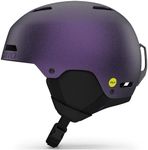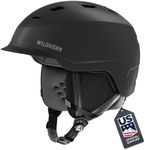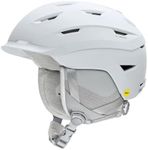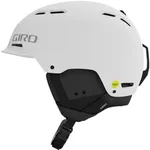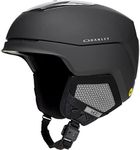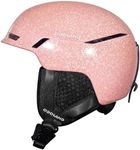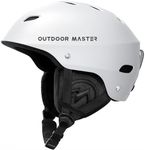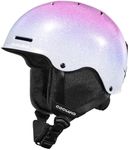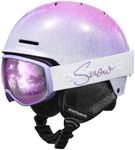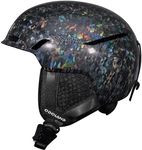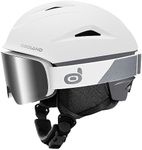Buying Guide for the Best Ski Helmets For Women
Choosing the right ski helmet is crucial for safety and comfort on the slopes. A good ski helmet will protect your head from impacts, keep you warm, and be comfortable to wear for long periods. When selecting a ski helmet, consider the following key specifications to ensure you get the best fit for your needs.Fit and SizingFit and sizing are critical because a helmet that doesn't fit properly won't provide adequate protection. Helmets come in various sizes, typically measured in centimeters around the head. To find the right size, measure the circumference of your head just above your eyebrows and compare it to the helmet's sizing chart. A well-fitting helmet should be snug but not too tight, with no pressure points. Adjustable helmets with dial-fit systems can offer a more customized fit.
Safety CertificationsSafety certifications indicate that the helmet meets specific safety standards. Look for certifications such as ASTM F2040, CE EN1077, or Snell RS-98. These certifications ensure the helmet has been tested for impact resistance and other safety features. Choosing a helmet with recognized safety certifications provides peace of mind that it will offer adequate protection in the event of a fall or collision.
VentilationVentilation is important for regulating temperature and preventing overheating. Helmets come with different ventilation systems, ranging from fixed vents to adjustable ones. Fixed vents provide constant airflow, while adjustable vents allow you to control the amount of airflow based on the weather conditions. If you tend to ski in varying temperatures or get hot easily, an adjustable ventilation system might be more suitable for you.
WeightThe weight of the helmet can affect comfort, especially during long days on the slopes. Lighter helmets are generally more comfortable to wear for extended periods, but they should still meet safety standards. Helmets made from materials like in-mold construction tend to be lighter. If you plan to ski for long hours, consider a lighter helmet to reduce fatigue.
Liner and PaddingThe liner and padding inside the helmet contribute to comfort and warmth. Many helmets feature removable and washable liners, which are great for maintaining hygiene. Some liners are also designed to wick away moisture, keeping you dry and comfortable. If you ski in cold conditions, look for helmets with thicker, insulated padding for added warmth.
Goggle CompatibilityGoggle compatibility ensures that your helmet and goggles fit well together without gaps. Some helmets come with a goggle clip or strap to keep your goggles securely in place. When trying on helmets, bring your goggles to check the fit and ensure there are no gaps that could let in cold air or snow. A good fit between helmet and goggles enhances comfort and visibility.
Audio CompatibilityAudio compatibility allows you to listen to music or take calls while skiing. Some helmets come with built-in audio systems or are compatible with aftermarket audio kits. If you enjoy listening to music or need to stay connected, look for helmets with audio compatibility features. Ensure that the audio system does not compromise the helmet's fit or safety.


